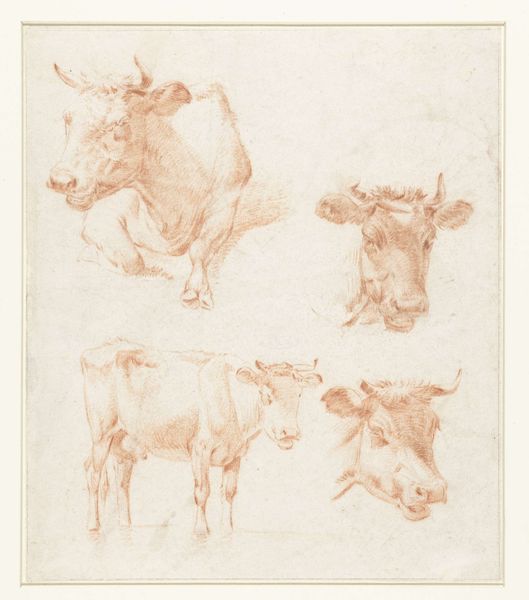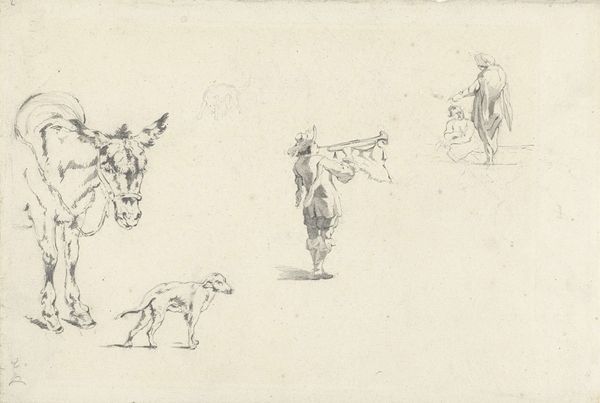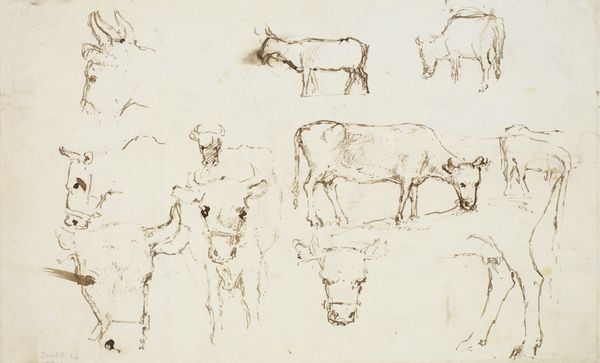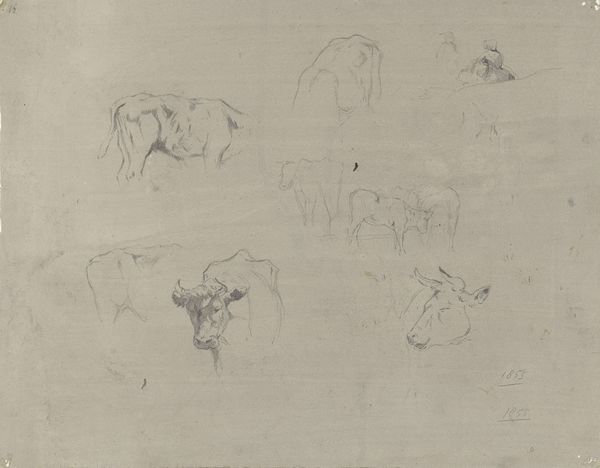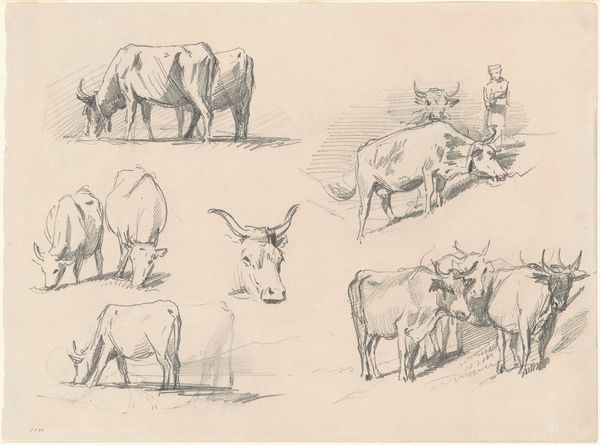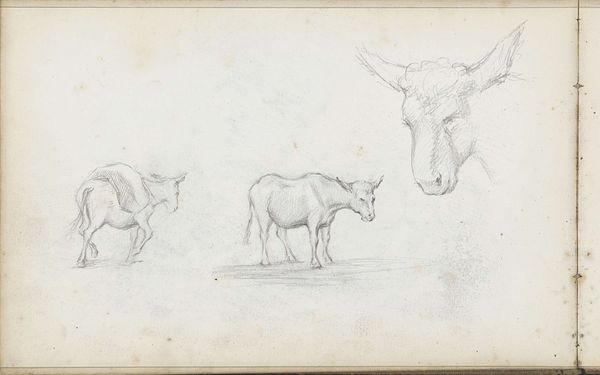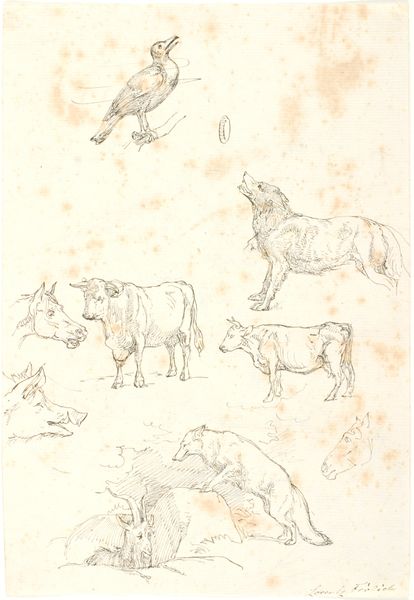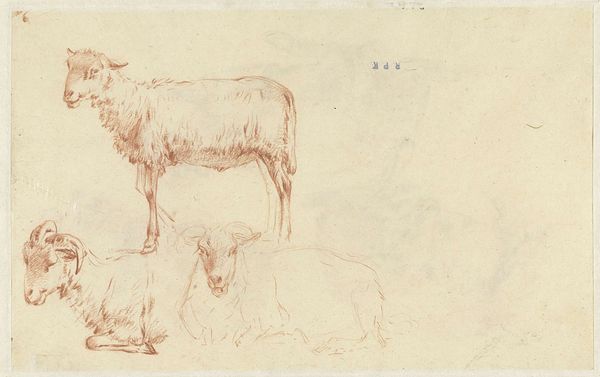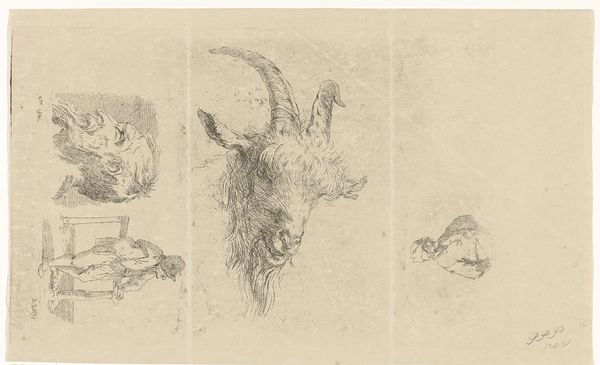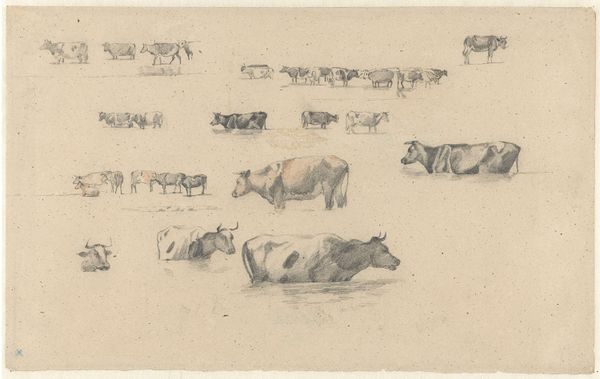
Studieblad met vier koeienkoppen en de poten van een koe 1848 - 1865
0:00
0:00
gerardbilders
Rijksmuseum
drawing, paper, pencil
#
drawing
#
imaginative character sketch
#
quirky sketch
#
sketch book
#
landscape
#
paper
#
personal sketchbook
#
sketchwork
#
pencil
#
sketchbook drawing
#
storyboard and sketchbook work
#
sketchbook art
#
fantasy sketch
#
realism
#
initial sketch
Dimensions: height 150 mm, width 186 mm
Copyright: Rijks Museum: Open Domain
Curator: Let’s take a look at a drawing by Gerard Bilders, made sometime between 1848 and 1865. It’s called "Studieblad met vier koeienkoppen en de poten van een koe," or "Study sheet with four cow heads and a cow's legs." Editor: My first thought is the simplicity of it. It’s just pencil on paper, but there’s something really grounding about seeing these different studies of the animal. You can almost smell the barn. Curator: Exactly! Bilders was part of the Hague School, which emphasized realism and a connection to the Dutch landscape. This drawing reflects that. He's engaging with agricultural life, but in a way that is still tied to academic traditions of anatomical study. Editor: The medium itself speaks to that connection, doesn’t it? Pencil is immediate, accessible, yet capable of great precision. The rapidness of line suggests an artist actively observing, trying to capture something essential about the subject through its most fundamental components, like hide and horn. What would this have meant to Bilders to create art out of rurality? Curator: The mid-19th century was a time of huge agricultural change in the Netherlands. These images celebrate the dignity of labour, particularly within rural spaces. I think that's key to the growing popularity of rural subjects during this time. These scenes helped foster a sense of national identity, tying progress with the land and traditions tied to Dutch prosperity. Editor: I appreciate how the different cow heads allow us to appreciate the variance within a single category. From the perspective of art history, these are probably preliminary studies, but as material documents, they illustrate how an artist experiments with form and perspective by the hand. Curator: Absolutely. The positioning on the page even highlights this aspect; he’s clearly working out ideas. But even in their incompleteness, these quick studies present a whole world of history about both artist and subject. Editor: Indeed, from labor and land to pencil and paper, there are so many perspectives embedded in this wonderful sheet. Curator: Agreed. A testament to the power of the simplest means.
Comments
No comments
Be the first to comment and join the conversation on the ultimate creative platform.
